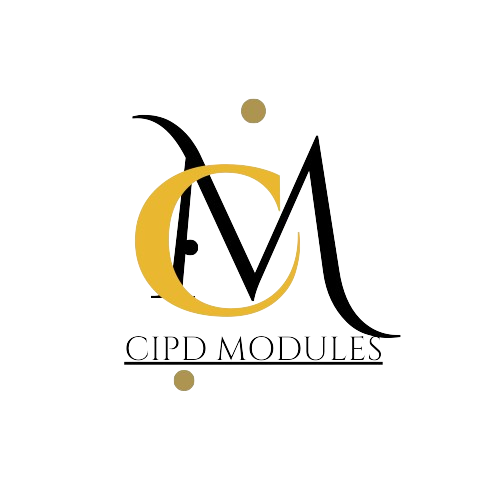AC 1.3 An explanation of an organisation’s products and/or services and main customers
Guideline
Students are given the distinct task of evaluating the variety of goods and services that the company offers to the market. For instance, Unilever offers a wide variety of products to a wide range of customers, including food, beauty, and personal care items. This clientele includes people of all ages, including babies and the elderly.
Students are expected to detail the specific benefits that each customer segment receives from the business in their presentation, emphasising the distinctive value propositions and benefits catered to the various needs and preferences of various customer demographics.
Guideline
According to Mohdzaini’s research (2021), technology has a significant impact on how engaged employees are in fulfilling their future roles and responsibilities. Students are encouraged to identify and investigate various types of technologies in light of this, such as:
- Internet: The global network that has transformed information access, research, and communication.
- Electronic communication: Social media platforms and smartphone use, which enable frictionless connectivity and cooperation.
- Technologies for managing files and sharing documents: Programs that facilitate data organisation and encourage effective information sharing and retrieval.
- Additionally, students should focus on the following areas as they delve deeper into how technology improves working practices:
- Communication: Technological developments that result in better internal and external communication channels for the organisation.
- Efficiency improvement: How technology streamlines operations and streamlines processes, resulting in higher productivity.
- Security is the application of technological solutions to protect against cyber threats and safeguard data.
- Productivity: The degree to which technology empowers workers and enables them to perform better in their individual roles.
Students can develop a thorough understanding of the advantages of technology on the future of work and organisational performance by examining these technological aspects.
Task two
AC 2.1 What is meant by workplace (organisation) culture
Guideline
According to Young’s findings (2021), organisational culture is the collection of norms, behaviors, and values that influence how people behave, interact, and relate to one another within an organisation. Students are urged to go into detail about both positive and negative cultural aspects as well as the part that human resources professionals play in creating cultures that give work meaning.
An environment with a positive culture promotes teamwork, creativity, and employee happiness, which increases productivity and fosters a sense of belonging. On the other hand, toxic behaviors, poor communication, and resistance to change are all signs of a negative culture and can lead to low morale and potential organisational problems.
Professionals in human resources must be involved in creating meaningful cultures. These individuals can have an impact on the company’s values, promote open communication, support diversity and inclusion, and put policies in place that promote employee growth and well-being. People managers contribute to a work environment where people can find meaning and fulfillment in their jobs by actively shaping the culture. This fosters improved performance and the success of the organisation as a whole.
AC 2.1 Why it is important to foster an appropriate and effective workplace culture
Guideline
Employees need to understand how the organisation works in order to be able to express their ideas and forge close relationships with their employers. Culture plays a crucial role in this process.
A workplace culture that prioritises diversity and inclusion is one that is successful. It encourages worker retention, motivation, and engagement, which helps build strong teamwork. Additionally, culture has a big impact on how well people perform both individually and as an organisation, which shapes the company’s overall success and accomplishments.
Guideline
Students explore various organisational systems and structures, including hierarchical, divisional, functional, and matrix systems. They emphasise the significance of aligning an organisation’s values with its strategic goals and operations, emphasising the significance of value-driven organisations. Students also describe the efforts made by human resources professionals to create extensive systems that influence both individual behaviors and the culture of the entire organisation with the goal of creating a setting that promotes development, productivity, and fulfillment.
AC 2.2 An example of how good people practice, and an example of how bad people practice can impact other parts of the organisation or beyond the organisation (for example through developing new and better ways of doing things or through poor practice stimulating new legislation)
Guideline
Students demonstrate how employing good people practices has a positive effect on an organisation in one scenario. Professionals in the human resources field emphasise the value of learning and development by providing examples of how investing in employees’ knowledge and skills improves their capabilities and overall performance. A skilled and motivated workforce, for instance, is cultivated through the implementation of regular training programs and the provision of opportunities for professional growth, which boosts productivity, enhances decision-making, and improves employee retention.
Students, however, draw attention to an instance in which unethical behaviour has a negative impact on the organisation. Insufficient support for employees’ mental and physical health, for instance, can result in increased stress, decreased productivity, and low morale among staff members. Professionals in the human resources field intervene to solve this problem by establishing procedures that put employees’ welfare first. To reduce stress and enhance general health, they might develop counselling services, mental health assistance networks, and wellness programs.
Students must understand that these scenarios can change based on their experiences and interactions within an organisation. A variety of examples can be used to highlight the effects of both good and bad people practices, underscoring the crucial role that human resources professionals play in establishing a positive and effective organisational culture.
AC 2.3 How individuals may learn and develop in different ways in organisations and how this might be accommodated in assessing and developing skills and capabilities
Guideline
In creating learning policies that support a culture where learning is highly valued for the development of skills and knowledge, Hayden (2021) emphasises the critical role of people professionals. The learning concepts listed below may be investigated by students when studying this subject:
- Learning and Competitiveness: Describe how a culture of ongoing learning helps to increase an organisation’s ability to compete. Organisations that place a high priority on learning are better able to innovate, adapt to changes, and maintain a competitive edge in the market.
- In order to develop a skilled and adaptable workforce, consider the importance of workplace learning. Employees are empowered by workplace learning to pick up new skills, stay current, and make valuable contributions to the expansion of the company.
- Learning’s Importance for High Performance: Explain the specific ways that learning affects both individual and organisational performance. Continuous learning among employees tends to boost performance, which boosts the efficiency of the entire organisation.
- Learning Trends: Describe the most recent developments in employee education, including techniques for locating knowledge gaps and addressing reasons for poor performance. Organisations can better meet the unique needs of their employees by customising their learning initiatives by analysing learning trends.
Students can gain a thorough understanding of the crucial role that learning policies play in forming a culture of continuous development and growth within an organisation by exploring these learning concepts.
George’s work from 2021 emphasises the importance of change as a component of organisational progress and exhorts professionals to actively plan and manage change for successful results. The following ideas should be investigated by students as they study this subject:
By taking into account these ideas, students can learn important lessons about the significance of change management and the proactive approach necessary to successfully navigate change, ultimately resulting in favourable outcomes for the organisation.


